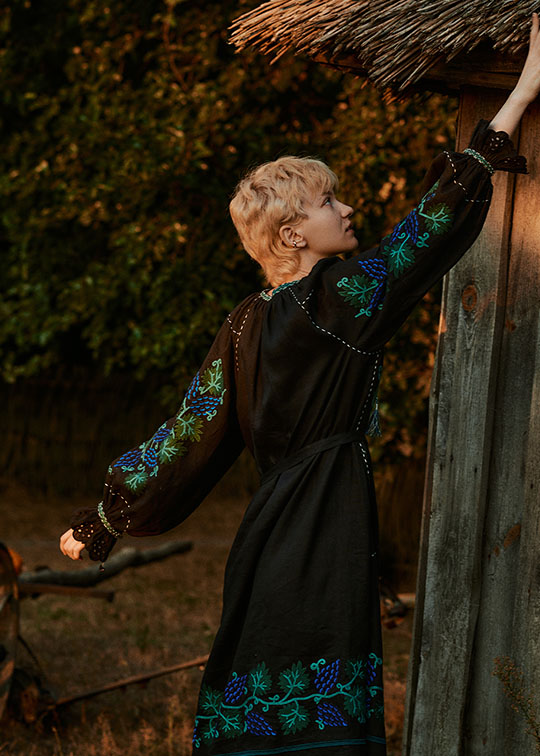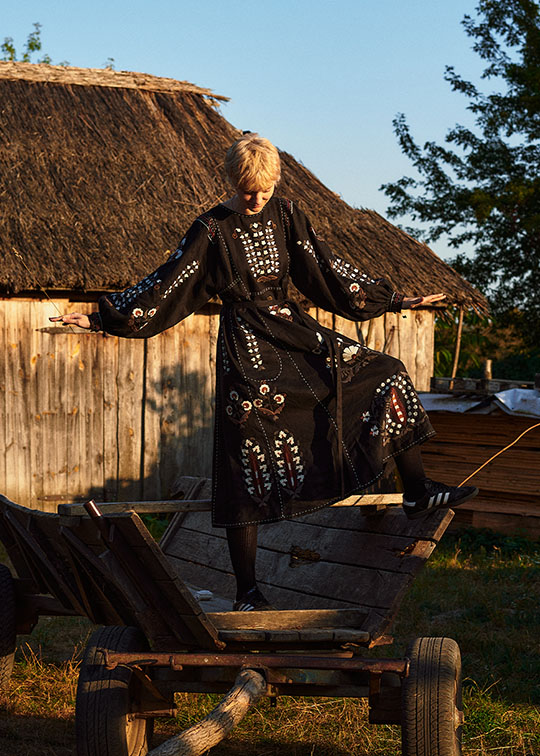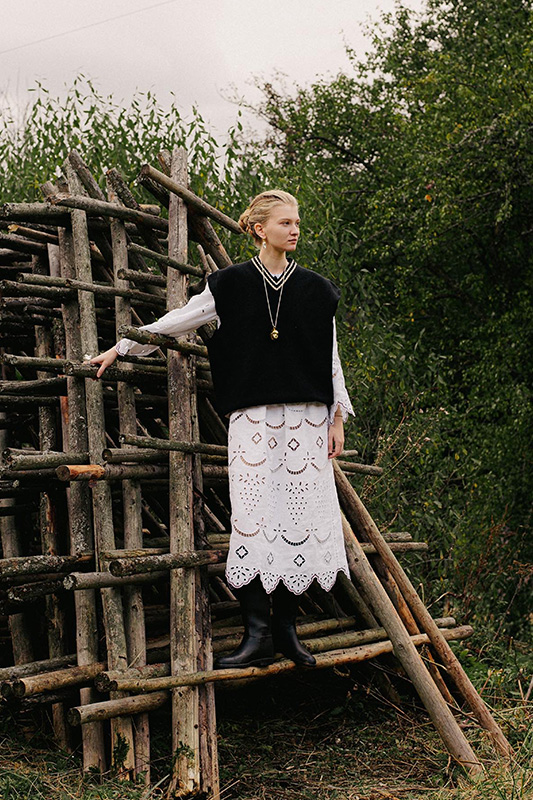
¿Qué significa OKSYMYR? Son las tres primeras letras de mi nombre, Oksana, y de mi apellido, Myronyak.
OKSYMYR nace a pocos meses de comenzar la guerra en Ucrania, con una misión basada en dos pilares fundamentales: ayudar económicamente a las bordadoras que se han quedado en el país, a pesar de las duras condiciones, y al mismo tiempo, trasladar y dar a conocer nuestro trabajo y cultura por todo el mundo.
I started by ordering the first blouses from my family and neighbours in my hometown in the Ivano-Frankivsk region in western Ukraine, an area known for its strong artisan tradition. Little by little, I started to contact more people from different parts of Ukraine, meeting new artisans, and so our product varied and grew.
Our aim is to continue to involve more people, provide more work in Ukraine and help those in need, as well as spread our culture throughout the world.




La filosofía de OKSYMYR es ofrecer un producto único en el mercado, elaborando prendas a medida, personalizadas y exclusivas, al tiempo que ayudamos y cuidamos a las personas que trabajan en Ucrania, proveyéndoles de una fuente de ingresos y atendiendo a sus necesidades.
Los puntos fuertes de OKSYMYR son, sin duda, la elaboración de prendas a medida, personalizadas según el gusto de nuestras clientas, utilizando principalmente bordados y detalles manuales. Las técnicas más utilizadas en nuestras prendas son el punto de cruz en blusas y vestidos, la técnica artesanal de aplicación y Richelieu. Todos los vestidos se confeccionan en un pequeño atelier en Kiev. Actualmente, nuestro equipo está formado por unas 10 personas.

Embroidery is a textile art that has been an integral part of many cultures throughout history and around the world. It not only beautifies garments and textiles, but also conveys stories, symbols and traditions.
In the current war context, especially in Ukraine, embroidery is a rich heritage that reflects our cultural and social identity throughout history. In my country, the Vyshyvanka is an embroidered shirt that represents both a traditional garment and a symbol of resistance and national pride.
Embroidery, by its nature, transcends linguistic and cultural barriers, allowing people to express their creativity, identity, values and life experiences. Embroidery motifs and patterns tell stories, representing shared beliefs and values, passed down through the years. We are proud to wear them at important celebrations and events. In times of war, embroidery allows generations to continue to pass on their culture, while representing a symbol of unity and hope.
Embroidery is therefore more than just a decorative technique: it is a powerful means of communication and expression that connects people across time and space, reflecting the richness and diversity of our culture.